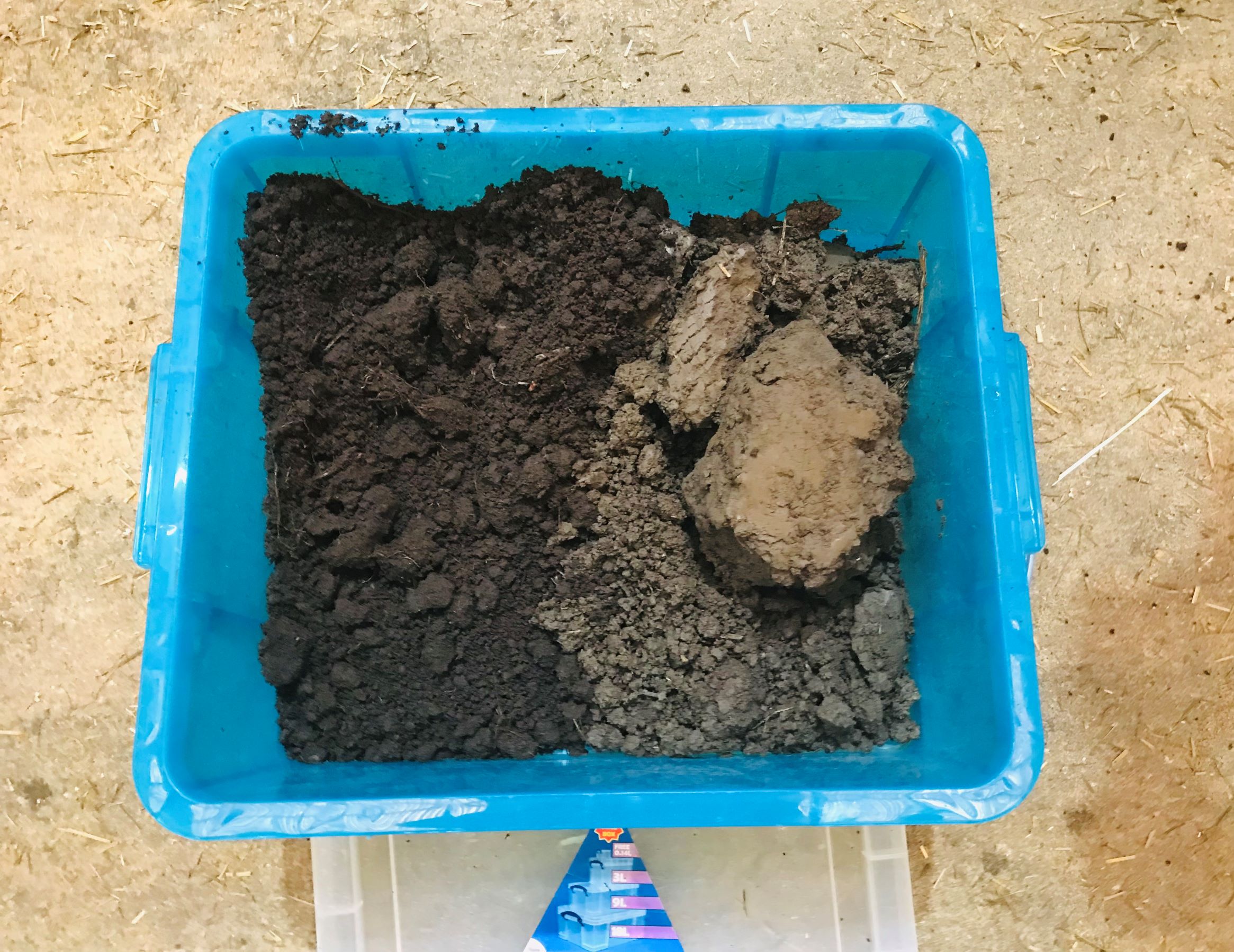Managing soils for a sustainable future
Thursday, 30 September 2021
Strategic dairy farm host, Ruari Martin, aims to produce as much energy and protein as possible for feed, but also encourage carbon sequestration.
In this meeting, Ruari met with Independent Grassland Consultant, Dr George Fisher, to explore what it takes to conserve the ability of your soil to continue sequestering carbon.
Stocks of soil carbon can either be sequestered (captured) or emitted (released), depending upon land management and grazing practices, so it is vital that we protect our soil health as it is critical to environmental and business sustainability.
Measuring soil health
If you laid all the organic matter from a jam jar of soil end to end it would be 10km long. Organic matter contains all the nutrients needed for grass to grow, but they are locked up with the carbon. Grass can only take up nutrients from soil solution.
If the soil doesn’t have decent organic matter, we can’t get the nutrients (from the slurry) into the grass. Organic matter in soil also needs air as it’s aerobic. Therefore, it’s important to dig holes into soil to let air in, as bugs use air and utilise organic matter. Worms bring air into soil and turn carbon from unavailable forms into available forms.
To assess how healthy is a soil is we can use the following:
- Biology
- Chemistry
- Physics
For optimum grass growth you need to get the sweet spot where the biology, chemistry and physics are all right.
Soil can be damaged by:
- Ploughing – ploughing disturbs the soil and gets rid of carbon. Every time you plough you lose 0.2% of organic matter from the soil per year. The less you can plough, the healthier the soil will be
- Applying too much fertiliser
- Over grazing leading to compaction – to measure the soil compaction, take a clump of soil from the ground. If you can’t break it when squeezing in the palm of your hand, the soil is compacted.
Assessing soil at Myerscough

The soil on the right was taken from a field that’s just been ploughed on the arable part of the unit. It is part of an arable rotation including cereals, beans, etc. and has had no grass for 10-15 years and no stock over it. The organic matter content is around 2-3%.
The soil on the left is from a field that’s been in the sheep enterprise. It was previously a dairy unit for 20-30 years, and sheep and beef have been run on it for 13 years. It has been permanent pasture for 40-50 years. The organic matter content is around 8-9%.
It takes a long time to build a healthy soil. For every 1% increase in organic matter, you need to put in around 12-18 tonnes of carbon per hectare into the top 30cm of soil as a balance. Equally, it takes a long time to reduce organic matter in the soil.
George's top tips for managing soils
- Shift the organic matter in the manures around - getting more on the arable side to buid organic matters in the soil which have reduced to around 2%
- Use the plough to get rid of soil compaction strategically around all three enterprises
- Put some arable crops into historic beef and sheep unit to bring soil phosphorus levels down and reduce risk of P loss into environment
Ruari's action points
- Treat all fields as individuals and try to get out more often and dig holes to assess compaction and water logging
- Try and incorporate a holistic view across all enterprises rather than looking at each one as being either an arable, dairy or sheep field
Further Resources
Improving soils for Better Returns
Principles to improve soil health
Find out more
Video: Ruari Martin's post event reflections
Video: George Fisher's post event reflections
Sectors:

